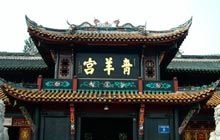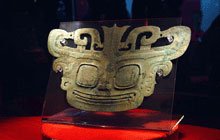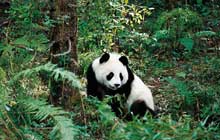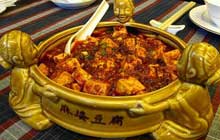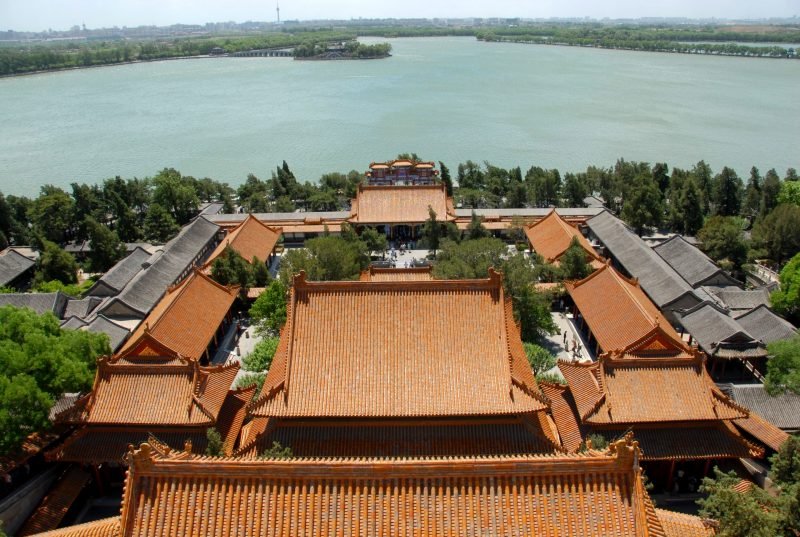Qingyang Temple , which literally means Temple of the Dark Ram, is the most exquisite and active Daoist temple in Chengdu . The name is associated with many myths, such as Laozi (the mythical founder of Daoism) claiming that he would be reborn in a market where dark rams were sold, to a meeting of Daoist luminaries at which some dark rams were seen. Whatever the truth of the name, it was acquired in the ninth century after some remarkable phenomenon led to the unearthing of a box which contained a seal on which ancient characters with a Daoist message were carved. » Read more »
» Read more »The museum at Sanxingdui, nearly 30 miles north of Chengdu, presents one of China 's most splendid, if mysterious, archeological finds. In 1929, when a collection of 400 multicolored jades were accidentally uncovered by a farmer here, this site was recognized as having rich potential; digs were organized in the 1930's by Gei Weihan, an American-Chinese professor, and then again in 1960's under Chinese direction. It wasn't until July 1986 however, that archaeologists discovered the two sacrificial pits containing hundreds of elaborate ivory, » Read more »
» Read more »The cuddliest, cutest, best-behaved pet you could want for your bamboo garden? Whatever you end up thinking of this most peculiar creature, it is impossible to take your eyes off them, and the place to explore questions surrounding this dichromatic bear of bears is the Panda Research and Breeding Centre in Chengdu .
The panda is a native of the mountain forests in Sichuan , with some territory overlapping into the neighboring Gansu and Shaanxi Provinces . » Read more »
» Read more »Day One
Today you will fly to Chengdu, the capital of modern Sichuan province. A historic capital serving as the traditional gateway to the Tibetan plateau, Chengdu has in recent years become a vibrant and sophisticated metropolis. Prepare yourself for mouth-watering Sichuan food, wonderful cultural sites and of course one of the rarest bears on our planet. (Shangri-la Hotel – Executive Riverview Room) (B, L, D)
» Read more »
» Read more »History
The history of the gardens at the New Summer Palace date back to the Mongol Emperor Kublai Khan; to improve Beijing's water supply, he ordered the construction of canals transporting water from the Western Hills to an enlarged lake, now known as the Summer Palace's Kunming Lake. Five hundred years later, Emperor Qianlong (r. 1736 – 1756) added lake-side gardens and a Temple for Gratitude and Longevity in honour of his mother's birthday. » Read more »
» Read more »